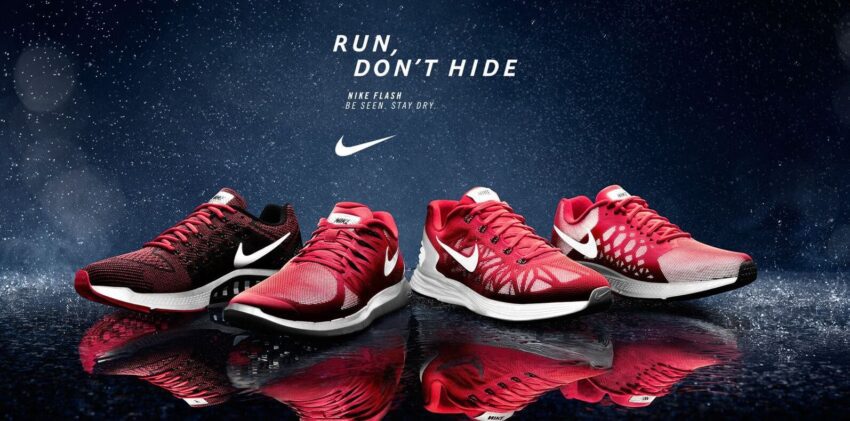Nike, one of the most recognized brands in the world, is synonymous with sports, innovation, and fashion. The famous Swoosh logo can be seen on athletes, celebrities, and casual wearers across the globe. But this wasn’t always the case. Nike started as a small, struggling company with big ambitions. From its humble beginnings in 1964 to becoming a global icon, Nike’s journey is an inspiring story of vision, innovation, and smart marketing.

Table of Contents
The Birth of Nike: A Visionary Idea
Nike’s story begins in 1964 when Phil Knight, a former track athlete at the University of Oregon, and his coach Bill Bowerman, founded Blue Ribbon Sports (BRS). At the time, their primary goal was to distribute running shoes from the Japanese brand, Onitsuka Tiger, to the U.S. market. Knight believed that quality, affordable running shoes could disrupt the market, which was dominated by German brands like Adidas and Puma.
However, the early days were challenging. Knight sold shoes out of his car at track meets, while Bowerman experimented with different designs to create lighter and more durable shoes for athletes. Their vision was clear: to create a brand that catered to the needs of athletes, no matter how small their operation was at the time.
The Name Change and the Iconic Swoosh
By 1971, the partnership with Onitsuka Tiger ended, and Blue Ribbon Sports needed to create its own brand. The company was renamed “Nike,” after the Greek goddess of victory. Knight wanted a name that embodied speed, movement, and athletic excellence, and Nike fit perfectly.
Around the same time, a young graphic design student, Carolyn Davidson, was hired to create a logo. She came up with the now-famous Swoosh, symbolizing motion and speed. Although Knight wasn’t initially impressed with the design, it would go on to become one of the most recognizable logos in the world.
Innovation and the Role of Bill Bowerman
One of the key factors in Nike’s success was Bill Bowerman’s relentless focus on innovation. As a coach, Bowerman was always looking for ways to improve the performance of his athletes, and he believed better shoes could make a significant difference.
His most famous invention was the “Waffle Trainer.” Inspired by the grooves in his wife’s waffle iron, Bowerman created a shoe with a unique sole that provided better traction and cushioning for runners. The Waffle Trainer became one of Nike’s first major successes and helped the company gain traction in the competitive athletic footwear market.
Breaking Into the Mainstream: Early Athlete Endorsements
In the 1970s, Nike began partnering with athletes to endorse its products, a move that would prove to be crucial in the brand’s growth. One of the first was distance runner Steve Prefontaine, whose charisma and success helped elevate Nike’s profile among serious athletes.
Athlete endorsements became a core part of Nike’s marketing strategy, and the brand’s association with top-tier talent helped it gain credibility. This approach laid the foundation for future partnerships with some of the biggest names in sports.

The Air Jordan Revolution
One of the most significant turning points in Nike’s history came in 1984 with the launch of Air Jordans, a signature shoe line for basketball legend Michael Jordan. The partnership between Nike and Jordan revolutionized both the sports and fashion industries.
The Air Jordan shoes became a cultural phenomenon, blending performance with style, and appealing not just to athletes but to a wider audience. Michael Jordan’s global popularity, combined with Nike’s savvy marketing, turned the Air Jordan brand into a multibillion-dollar business, and it continues to be one of Nike’s most profitable lines today.
Global Expansion and Marketing Mastery
As Nike’s popularity grew in the United States, the company set its sights on international markets. Throughout the 1980s and 1990s, Nike expanded into Europe, Asia, and Latin America, becoming a truly global brand.
One of Nike’s most famous marketing campaigns was the “Just Do It” campaign, launched in 1988. This simple, yet powerful slogan resonated with consumers on a deep emotional level, inspiring people to push their limits, regardless of their background or fitness level. The “Just Do It” campaign solidified Nike’s position as a brand that was about more than just products—it was about inspiration, determination, and success.
Sustainability and Social Responsibility
As Nike grew, so did its responsibility to address environmental and social concerns. In the 1990s, the company faced significant criticism for its labor practices, particularly regarding working conditions in overseas factories. This controversy forced Nike to take a hard look at its supply chain and make significant changes.
In response, Nike implemented strict ethical standards for its factories and launched initiatives to reduce its environmental footprint. The company introduced sustainable materials in its products, such as recycled polyester, and committed to reducing carbon emissions. Today, Nike is recognized for its efforts in sustainability and social responsibility, a far cry from the brand’s earlier years of criticism.
Challenges and Criticism
Despite its success, Nike has not been without challenges. In the 1990s, the brand faced a public relations crisis over its labor practices in overseas factories. Allegations of sweatshop conditions and underpaid workers hurt Nike’s image, but the company responded by becoming more transparent and making efforts to improve factory conditions.
Nike’s ability to adapt to criticism and implement meaningful changes has helped it maintain its position as a leader in the sportswear industry.
Conclusion: Nike’s Legacy and Future
Nike’s journey from a small startup to a global powerhouse is a testament to innovation, smart marketing, and perseverance. From Phil Knight’s car trunk to becoming the world’s leading sports brand, Nike’s story is one of constant evolution. Today, Nike continues to push the boundaries of sportswear technology while addressing environmental and social challenges.
As it looks to the future, Nike is focused on blending performance with sustainability, ensuring that it remains not only a global icon but also a responsible leader in the industry.

Anaya Shah is a seasoned consumer product analyst with over 8 years of experience in the retail and e-commerce industries. She holds a Master’s degree in Business Administration with a specialization in Marketing from a top-tier university. Anaya has a keen eye for detail and a passion for uncovering the true value of products, helping consumers make informed decisions. At BrandCritica.com, she brings her expertise in product evaluation, brand analysis, and market trends to deliver trustworthy and insightful content. Connect with Anaya on Instagram for the latest updates and reviews.

